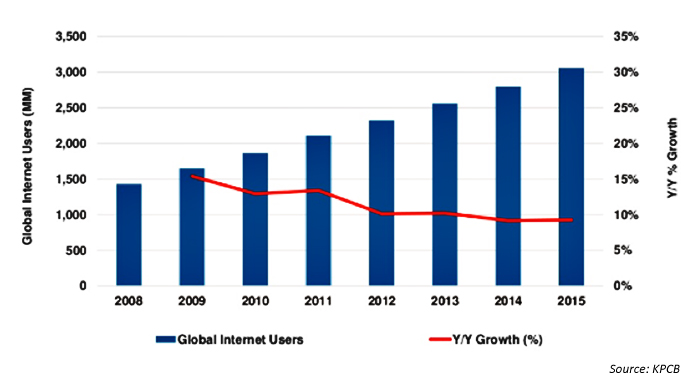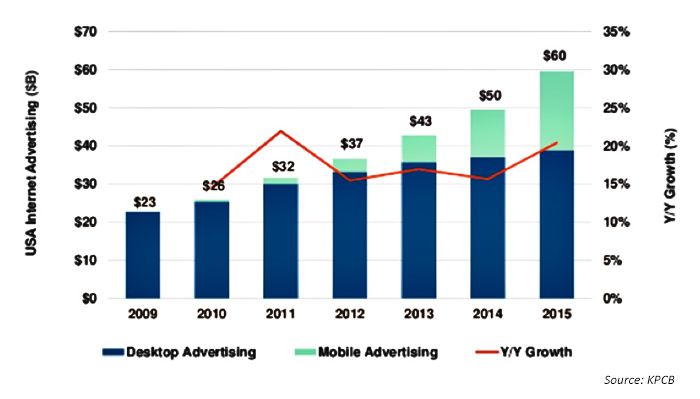
Forbes ranks Mary Meeker as the 86th most powerful woman in the world and #5 on their “Midas List—The World’s Smartest Tech Investors.” Currently a partner at Silicon Valley venture-capital firm Kleiner Perkins Caulfield & Byers, she is acknowledged as one of the savviest commentators on developments across the technology industry. Among her many accomplishments was serving as research analyst for Morgan Stanley during Google’s 2004 IPO.
Meeker was characterized by Andrew Serwer in Fortune as being “absolutely first rate when it comes to spotting big-picture trends before they come into focus. She gathers massive amounts of data and assembles it into voluminous reports that, while sometimes rambling and overambitious, are stuffed with a million jumping-off points.” TechCrunch says, “Mary Meeker has become a legend for publishing these compilations of the most critical stats and trends about how technology is evolving.”
Recently, Meeker presented at the 2016 Code Conference, where scheduled speakers included Jeff Bezos, Elon Musk, Jack Dorsey, Sheryl Sandberg, and Bill and Melinda Gates. Her 213-page presentation delved deeply into U.S. and global tech trends and their relationships with global socioeconomic issues.
The tech news website Recode saw the following as three of the most important takeaways from Meeker’s comprehensive presentation:
“1) The internet itself is seeing slowing growth. In the past two decades, the internet economy was affected by macroeconomic trends, but it was external issues like the housing crisis and the financial crisis that were driving the slowdown. Now it is global internet growth itself that is slowing down.
“2) Typing text into a search bar is so last year. In five years, at least 50 percent of all searches are going to be either images or speech.
“3) The home screen has acted as the de facto portal on mobile devices since the arrival of the iPhone and even before. Messaging apps, with context and time, have a chance to rival the home screen as the go-to place for interaction.”
Meeker’s analysis shows that the number of global Internet users is just over 3 billion, although year-over-year growth has “slowed” to a rate of 9% in 2015. This is equal to 2014’s growth rate and on a downward trend line from 15% in 2009.
GLOBAL INTERNET USERS, 2008–2015

In broad strokes, Meeker attributes the slowdown in Internet users to a broad global economic weakness and a declining source of new adopters. In her words, “easy growth is behind us.” She cites several distinct trends leading to this conclusion, saying, “Five epic growth factors over the past two decades are losing their mojo.” These include the following:
1. Connectivity growth is slowing.
2. Emerging-country growth is slowing.
3. Government debt is rising (and high).
4. Interest rates have declined.
5. The rate of population growth is slowing and population is aging.
Despite these global challenges and higher risks for both players in the Internet space and more traditional businesses, Meeker still sees tremendous opportunity for companies that “innovate, increase efficiency, lower prices, and create jobs.” Her presentation says, “The Internet can be @ core of this.” Certainly, the appetite for U.S. online advertising remains very healthy, with one of Meeker’s charts showing an accelerating growth rate for digital ad expenditures of around 20% annually.
U.S. INTERNET ADVERTISING, 2009–2015

